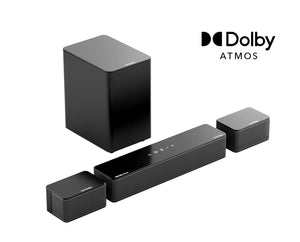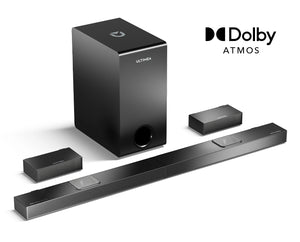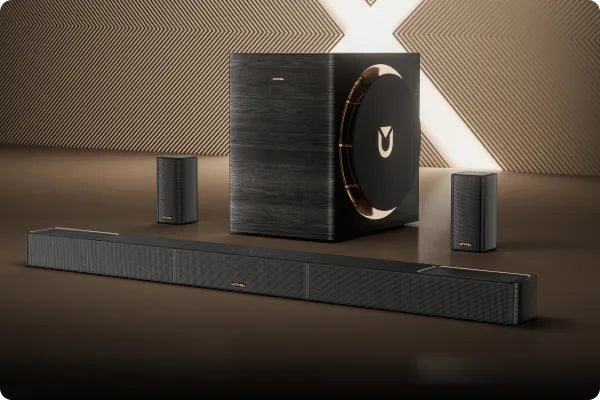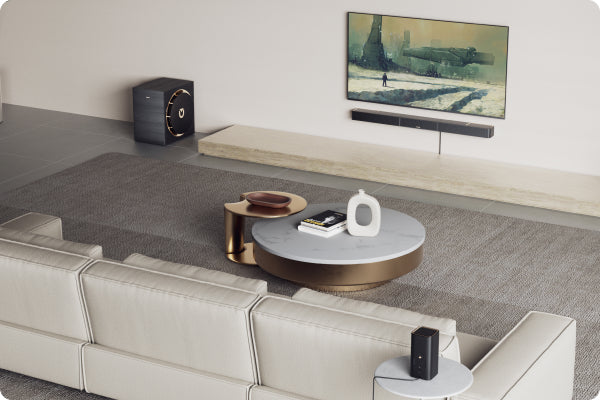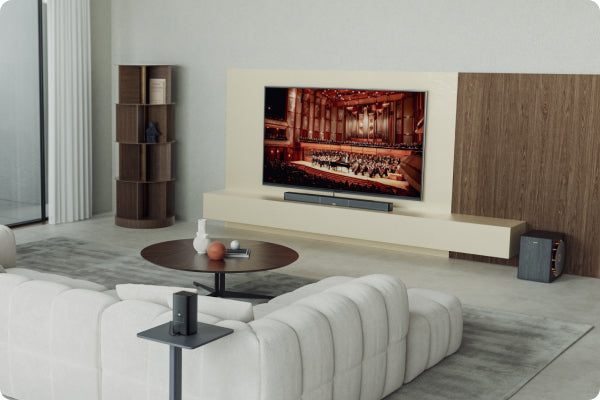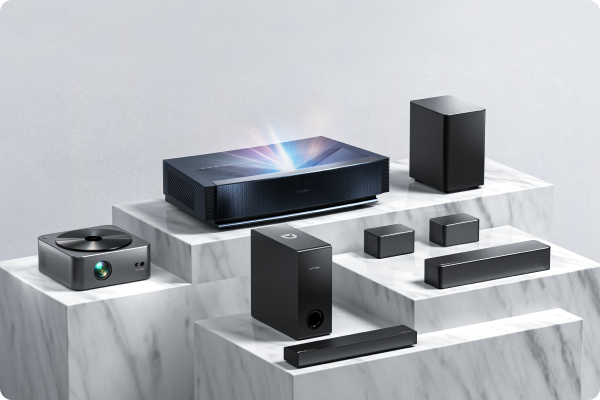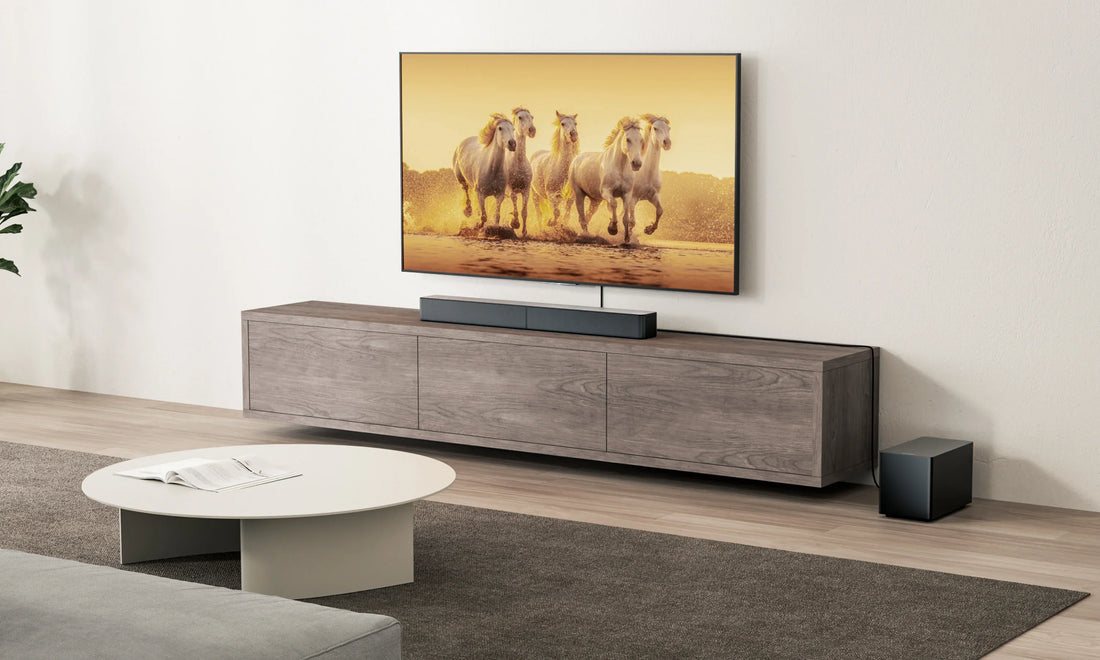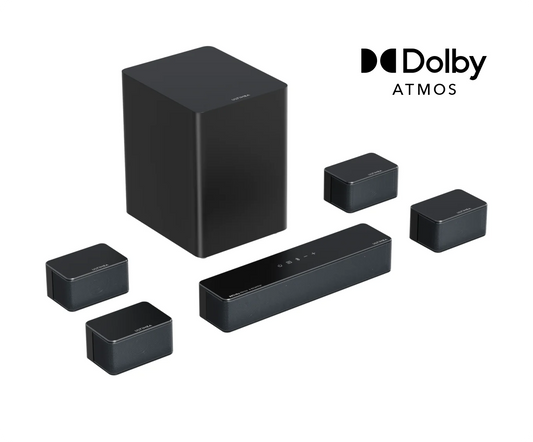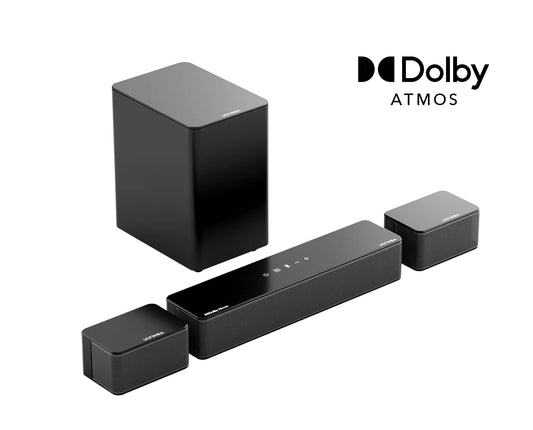Introduction
Many people feel puzzled when shopping for a soundbar system: “How can this system claim to be a 5.1 system?” Or they see a soundbar paired with a subwoofer and assume it’s a 2.1 setup.
In reality, channels, speaker units, and speaker drivers are three different things. This article uses soundbars as an example to help you quickly understand their differences, avoid common misconceptions, and truly know where the sound is coming from.
Breaking Down the Three Key Concepts
Speaker Units
These are the physical components you place in your home — for example, a soundbar, a subwoofer, or rear surround speakers.
Even a single soundbar may contain multiple audio channels. For instance, a setup that includes one soundbar, one subwoofer, and two surround speakers might appear to consist of only four devices, but it could actually deliver a 5.1 or even more advanced surround sound experience.
Speaker Drivers
These are the actual sound-producing components located inside the speaker units. Drivers include tweeters for high frequencies, mid-range drivers for vocals and instruments, and woofers for bass.
A soundbar might contain three mid-range drivers, each dedicated to outputting front-left, center, and front-right channels. Some models also include additional tweeters or woofers. The more drivers inside, the wider the frequency range and the more accurate the sound positioning.
Channels
A channel refers to an independent audio signal path. Each one represents sound from a specific direction, which helps create a sense of space.
For example, a 5.1 channel system includes front left, center, front right, surround left, surround right, and one subwoofer channel.
The important point is: Channel count is defined by the audio source and the system’s processing chip, not just by how many visible speakers you have. A well-designed soundbar with the right decoder can recreate full multi-channel sound, even as a single unit.
A Common Misunderstanding: One Soundbar ≠ One Channel
It’s easy to assume that “one soundbar plus one subwoofer” equals a 2.1 system. But in fact, that one soundbar may include multiple drivers capable of producing front left, center, and front right audio.
Example:
The Ultimea Poseidon D80 Boom soundbar integrates three channels in the main bar and pairs with a subwoofer and four surround speakers.
Though it looks like five speaker units plus a subwoofer, it delivers a true 7.1 channel surround sound system.
Quick Comparison Chart (Using a Soundbar Example)
| Term | What It Refers To |
|---|---|
| Speaker Units | The physical devices you can see and place — soundbar, subwoofer, rear speakers |
| Speaker Drivers | The internal sound-producing parts — a single soundbar might have 5 or more |
| Channels | The number of audio signal paths — for example, 5.1 has six channels: front left/center/right, surround left/right, and subwoofer |
Tips for Choosing a Soundbar
✅ Don’t be misled by how many devices you see. A single soundbar can deliver 5.1 sound.
✅ Focus on the channel support — check how many channels the system is built to handle.
✅ Look at audio technologies — such as Dolby Atmos, DTS:X, or virtual surround support.
✅ Match your space — compact apartments benefit from all-in-one bars, while larger living rooms may need rear speakers for an expanded soundstage.
Conclusion
- Speaker Units = The physical number of devices (what you see)
- Speaker Drivers = The internal components producing sound (what you hear)
- Channels = The number of audio paths in the signal (what creates immersion)
Understanding these differences will help you make smarter choices when reading product specs — and create the immersive home theater experience you’re looking for.
